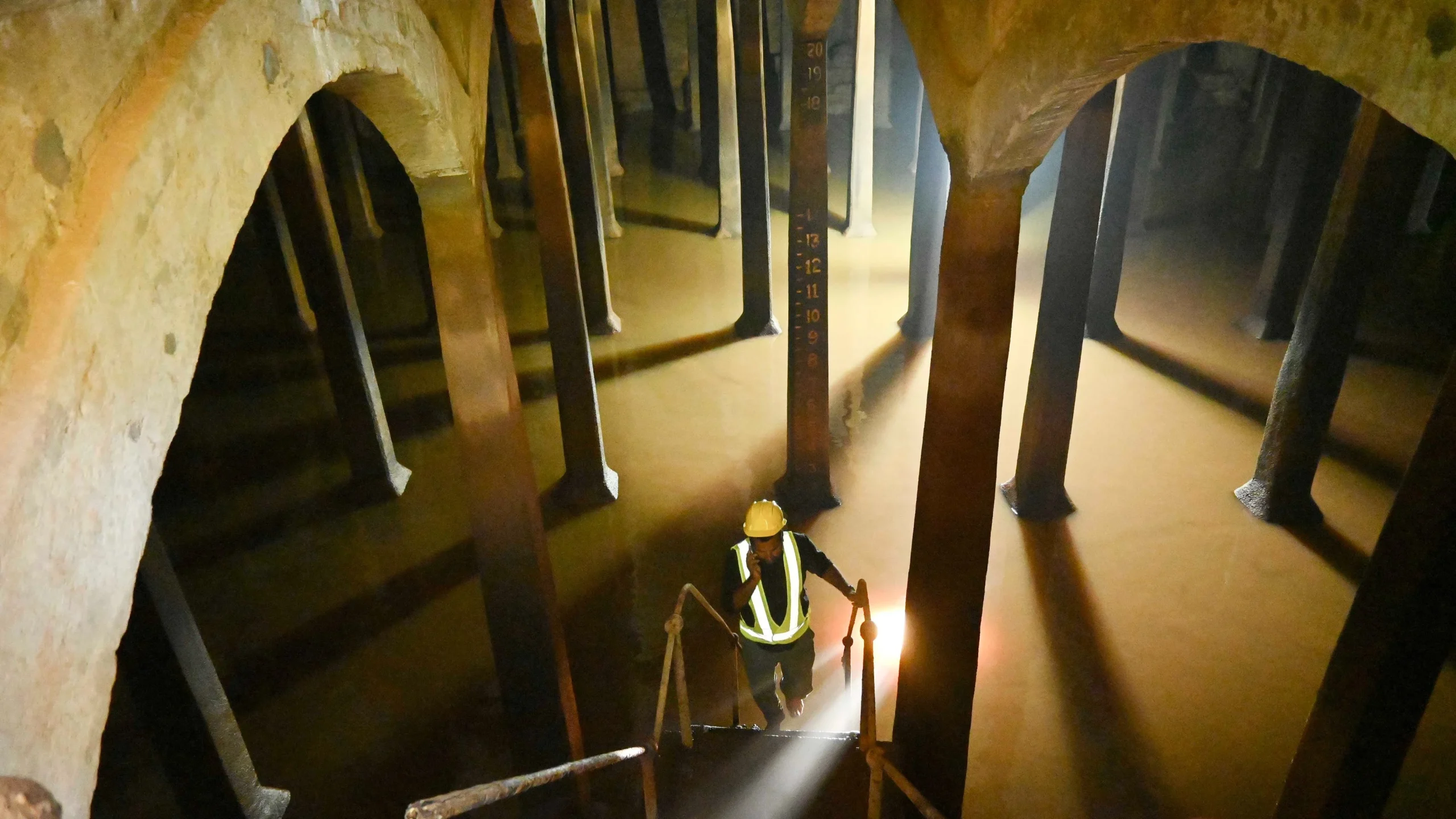Last year the Brihanmumbai Municipal Corporation (BMC) proposed a plan to reconstruct the 137-year-old Malabar Hill water reservoir. Since the announcement, the municipal corporation has received fierce opposition from residents of the city.
BMC’s proposed project requires demolishing the existing reservoir and digging up the Hanging Gardens that sit atop the reservoir. According to the construction plan, the project will last for at least seven years and the garden will be inaccessible for the entire period. Malabar Hill has rich flora and fauna and is an eco-sensitive zone. The proposal further states that nearly 389 trees will affected by this project.
The citizens have argued that the removal of trees will disturb the natural balance of the ecosystem and demanded an alternative solution to the proposal that would be more environmentally friendly. Furthermore, citizens and technical experts have emphasised the heritage aspect of the century-old reservoir.

Malabar Hill Reservoir
The reservoir was built in 1887 and is one of the first artificial water reservoirs in the city. It is located beneath the Hanging Gardens at Malabar Hills. It was built to meet the daily water needs of the evergrowing city of Bombay. The reservoir was conceptualised to supply water to Nariman Point, Cuffe Parade, Churchgate, Colaba, Kalbadevi, Girgaon, Nepean Sea Road, and Malabar Hill localities.

The reservoir was constructed mainly with brick masonry and has semi-circular arches supporting the ceiling. The capacity of the reservoir was last augmented in 1925, and since then not much has changed. It can supply about 150 million litres per day (MLD). The reservoir receives its water supply from Vaitrana Lake, one of the seven lakes that supply water to Mumbai.
BMC’s plan
The BMC conducted a structural audit in 2019, after which a decision was made to reconstruct the reservoir. The civic officials said the reconstruction would be done using reinforced cement concrete and would completed in a span of seven years. The project cost has been estimated at Rs 400 crores.
The BMC will conduct the reconstruction work in five phases. “In the first phase, we will empty the first chamber and transfer its water to a different chamber to ensure that there is no crisis in supply, and after that, we will demolish and reconstruct the chamber. There are a total of seven chambers in the reservoir and in each phase, we will demolish and reconstruct each reservoir,” said a BMC official.
The reservoir supplies water to the A, B, C, and D wards of Mumbai. BMC is planning to increase the capacity of the tank to 190 MLD to avoid a deficit in water supply in the future. a senior civic official from the water supply project department explained, “The primary objective of taking up the rebuilding work is to ensure that the crisis of water shortage is resolved. The population level and overall demography of south Mumbai has changed drastically through the past decades, which eventually has led to an increase in the requirement for water as well.”
Currently, Mumbai has an overall demand of 4,200 MLD of water, but the BMC is able to supply 3,850 MLD only.
Backlash from the citizens
The municipal corporation’s announcement has met with fierce backlash from the locals as the plan required the felling of 189 trees and the transplanting of 200 more. The residents have demanded an alternative solution to carry out phase-wise repairs and augmentation of the reservoir without harming the ecological balance of the area.
Nilesh Baxi, a member of the core committee of Malabar Hill residents said, “I have been saying for a long time that the repairs can be done through 20 vents spread over the entire garden. Where is the need to break the garden?”
Zoru Bhathena, an environmental activist, said, “As per the BMC’s claims, if the roof of the reservoir is weak, then how can Hanging Garden remain even without water as the whole garden itself will collapse with the weight unless and until it is strengthened or rebuilt.”
Following the backlash, the BMC set up a committee to reevaluate the project. The committee comprised IIT professors, BMC engineers, architects as well as citizens with expertise in technical subjects. The committee was appointed in November 2023 and published its report on February 29.
There were a total of eight members inducted in the committee, which included IIT Professors, Alok Goyal, RS Jangid, Jothi Prakash and Dasaka Murthy, Deputy Municipal Commissioner (DMC) special engineering, CH Kandalkar and three independent members including architect Rahul Kadri, structural and civil engineers, Alpa Sheth and Vasudeo Nori.
Alpha Seth, a member of the expert committee said, “The two compartments which we visited are in excellent condition and well maintained by the BMC. The reservoir is the heritage asset of the city.”

The Report
The report mentioned that parts of the floor covered in knee-deep silt were not accessible for inspection. It also stated the possibility of water seepage through the floor. The report recommended the use of thermal imaging methods to detect any hidden distress or weaknesses accurately. Furthermore, preparing detailed as-built drawings with numbered grids that will be is essential for recording construction details, and other defects.
The structural condition of the reservoir is deemed satisfactory by the committee and eliminates the need for demolition or reconstruction in the next 10-15 years.